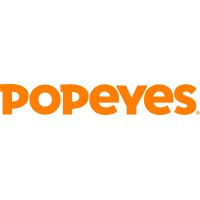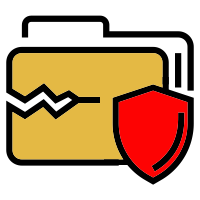
Popeyes Louisiana Kitchen Company Cyber Security Posture
popeyes.comFounded in New Orleans in 1972, POPEYES® has more than 45 years of history and culinary tradition. Popeyes distinguishes itself with a unique New Orleans-style menu featuring spicy chicken, chicken tenders, fried shrimp, and other regional items. The chain's passion for its Louisiana heritage and flavorful authentic food has allowed Popeyes to become one of the world's largest chicken quick-service restaurants with over 3,600 restaurants in the U.S. and around the world.
PLK Company Details
popeyes-louisiana-kitchen
24533 employees
89164.0
722
Restaurants
popeyes.com
Scan still pending
POP_1311365
In-progress
Between 900 and 1000
This score is AI-generated and less favored by cyber insurers, who prefer the TPRM score.
 PLK Global Score
PLK Global Score.png)

Popeyes Louisiana Kitchen Company Scoring based on AI Models
| Model Name | Date | Description | Current Score Difference | Score |
|---|---|---|---|---|
| AVERAGE-Industry | 03-12-2025 | This score represents the average cybersecurity rating of companies already scanned within the same industry. It provides a benchmark to compare an individual company's security posture against its industry peers. | N/A | Between 900 and 1000 |
Popeyes Louisiana Kitchen Company Cyber Security News & History
| Entity | Type | Severity | Impact | Seen | Url ID | Details | View |
|---|---|---|---|---|---|---|---|
| Burger King | Data Leak | 85 | 4 | 05/2019 | BUR22620323 | Link | |
Rankiteo Explanation : Attack with significant impact with customers data leaksDescription: A French online shop Kool King specifically tailored to be used by kids who bought Burger King menus exposed nearly 37,900 records after a cyber attack. The data was leaked because the database storing it was misconfigured, allowing anyone with an Internet connection and the knowledge to find it to get to the records stored within. Since the database was not secured in any way and publicly accessible, anyone who reached it could then edit, download, or even destroy the data without needing admin credentials. The information compromised contained personally identifiable information (PII) such as emails, passwords, names, phones, DOB, voucher codes, links to the externally stored certificates, etc.100 | |||||||
| Burger King | Data Leak | 60 | 3 | 08/2023 | BUR22818923 | Link | |
Rankiteo Explanation : Attack with significant impact with internal employee data leaksDescription: Burger King, the world's largest fast food chain, exposed sensitive credentials to the public twice, endangering their systems and data. Burger King in France exposed private information to the public as a result of a website configuration error, the Cybernews investigation team found. People who applied for jobs at Burger King in France may have been impacted because the impacted website processed job applications. It's not the first time Burger King has exposed sensitive information; supposedly, the France branch exposed personally identifying information (PII) of children who purchased Burger King menus due to a similar misconfiguration. | |||||||
Popeyes Louisiana Kitchen Company Subsidiaries

Founded in New Orleans in 1972, POPEYES® has more than 45 years of history and culinary tradition. Popeyes distinguishes itself with a unique New Orleans-style menu featuring spicy chicken, chicken tenders, fried shrimp, and other regional items. The chain's passion for its Louisiana heritage and flavorful authentic food has allowed Popeyes to become one of the world's largest chicken quick-service restaurants with over 3,600 restaurants in the U.S. and around the world.
Access Data Using Our API

Get company history
.png)
PLK Cyber Security News
Investing in poultry technology? Cybersecurity is key
A growing number of poultry companies have invested in automation, artificial intelligence and other technologies to solve labor challenges and ...
NJ hospital sending patients away because of cybersecurity concern
A spokeswoman for CentraState Medical Center said the facility is experiencing some technical problems related to an IT security issue.
Revealed: Why McDonald’s Closed Some Locations Early This Morning
A little after midnight (Central), this morning, McDonald's suffered a massive "technology system outage." The company said the outage was " ...
Brunch with Peter Thiel turned into an impromptu pitch meeting for this former CIA analyst and current cybersecurity CEO
The evolving nature of Expanse reflects the circuitous path of its founder and CEO, Tim Junio. His initial interest in computer science shifted ...

PLK Similar Companies

Grand Lux Cafe
The idea for Grand Lux Cafe came to life when The Venetian Resort, Hotel and Casino in Las Vegas asked David Overton, Founder of The Cheesecake Factory Restaurants, to create an upscale casual restaurant concept for their property. Excited by the proposal and the opulent "Venetian" theme, Mr. Ov

Burger King
The year is 1954. Dave and Jim*, two budding entrepreneurs, are on a mission to re-design the perfect broiler, one that will infuse flame-grilled goodness into every burger. And that's how our brand was born. Today the Burger King Corporation, its affiliates and its franchisees collectively operat

Chick-fil-A Restaurants
Chick-fil-A, Inc. is the third largest quick-service restaurant company in the United States, known for its freshly-prepared food, signature hospitality and unique franchise model. More than 200,000 Team Members are employed by independent Owner-Operators in more than 3,000 restaurants across the Un

Waffle House, Inc.
Waffle House has been serving Good Food Fast® since 1955. We started in one restaurant serving Avondale Estates, GA, and then grew into a national brand with more than 1,900 restaurants in 25 states providing career paths to 40,000 + employees. The love and devotion of our customer base helped bui

The Cheesecake Factory
We're known for our huge restaurants and generous portions but we're so much more than that! Here, you'll have big opportunities to learn and grow your career, you can take pride in the work you do, be able to balance your life with the hours and schedule you need, and be part of a team committed to

Areas France
Areas is one of the world leaders in Food & Beverage and Travel Retail with revenues of 1.9 billion euros in 2018/19. Areas receives 348 million customers each year in its 1,900 stores in 12 countries in Europe, the US, Mexico and Chile. As a reference restaurant operator in the world of travel, fo

Frequently Asked Questions
Explore insights on cybersecurity incidents, risk posture, and Rankiteo's assessments.
PLK CyberSecurity History Information
How many cyber incidents has PLK faced?
Total Incidents: According to Rankiteo, PLK has faced 2 incidents in the past.
What types of cybersecurity incidents have occurred at PLK?
Incident Types: The types of cybersecurity incidents that have occurred incidents Data Leak.
Incident Details
Can you provide details on each incident?

Incident : Data Exposure
Title: Burger King Data Exposure Incidents
Description: Burger King, the world's largest fast food chain, exposed sensitive credentials to the public twice, endangering their systems and data.
Type: Data Exposure
Attack Vector: Website Configuration Error
Vulnerability Exploited: Website Misconfiguration

Incident : Data Breach
Title: Kool King Data Breach
Description: A French online shop Kool King specifically tailored to be used by kids who bought Burger King menus exposed nearly 37,900 records after a cyber attack. The data was leaked because the database storing it was misconfigured, allowing anyone with an Internet connection and the knowledge to find it to get to the records stored within. Since the database was not secured in any way and publicly accessible, anyone who reached it could then edit, download, or even destroy the data without needing admin credentials. The information compromised contained personally identifiable information (PII) such as emails, passwords, names, phones, DOB, voucher codes, links to the externally stored certificates, etc.
Type: Data Breach
Attack Vector: Misconfigured Database
Vulnerability Exploited: Publicly Accessible Database
What are the most common types of attacks the company has faced?
Common Attack Types: The most common types of attacks the company has faced is Data Leak.
Impact of the Incidents
What was the impact of each incident?

Incident : Data Exposure BUR22818923
Data Compromised: Personally Identifiable Information (PII), Children's PII
Systems Affected: Job Application Website, Online Ordering System

Incident : Data Breach BUR22620323
Data Compromised: emails, passwords, names, phones, DOB, voucher codes, links to the externally stored certificates
Systems Affected: Database
What types of data are most commonly compromised in incidents?
Commonly Compromised Data Types: The types of data most commonly compromised in incidents are PII, Children's PII, emails, passwords, names, phones, DOB, voucher codes and links to the externally stored certificates.
Which entities were affected by each incident?

Incident : Data Breach BUR22620323
Entity Type: Online Shop
Industry: Retail
Location: France
Customers Affected: 37900
Data Breach Information
What type of data was compromised in each breach?

Incident : Data Exposure BUR22818923
Type of Data Compromised: PII, Children's PII
Personally Identifiable Information: Job Applicants, Children's PII

Incident : Data Breach BUR22620323
Type of Data Compromised: emails, passwords, names, phones, DOB, voucher codes, links to the externally stored certificates
Number of Records Exposed: 37900
Sensitivity of Data: High
Personally Identifiable Information: emails, passwords, names, phones, DOB
References
Where can I find more information about each incident?

Incident : Data Exposure BUR22818923
Source: Cybernews Investigation Team
Where can stakeholders find additional resources on cybersecurity best practices?
Additional Resources: Stakeholders can find additional resources on cybersecurity best practices at and Source: Cybernews Investigation Team.
Post-Incident Analysis
What were the root causes and corrective actions taken for each incident?

Incident : Data Breach BUR22620323
Root Causes: Misconfigured Database
Additional Questions
Impact of the Incidents
What was the most significant data compromised in an incident?
Most Significant Data Compromised: The most significant data compromised in an incident were Personally Identifiable Information (PII), Children's PII, emails, passwords, names, phones, DOB, voucher codes and links to the externally stored certificates.
What was the most significant system affected in an incident?
Most Significant System Affected: The most significant system affected in an incident were Job Application Website, Online Ordering System and Database.
Data Breach Information
What was the most sensitive data compromised in a breach?
Most Sensitive Data Compromised: The most sensitive data compromised in a breach were Personally Identifiable Information (PII), Children's PII, emails, passwords, names, phones, DOB, voucher codes and links to the externally stored certificates.
What was the number of records exposed in the most significant breach?
Number of Records Exposed in Most Significant Breach: The number of records exposed in the most significant breach was 379.0.
References
What is the most recent source of information about an incident?
Most Recent Source: The most recent source of information about an incident is Cybernews Investigation Team.
What Do We Measure?
















Every week, Rankiteo analyzes billions of signals to give organizations a sharper, faster view of emerging risks. With deeper, more actionable intelligence at their fingertips, security teams can outpace threat actors, respond instantly to Zero-Day attacks, and dramatically shrink their risk exposure window.
These are some of the factors we use to calculate the overall score:
Identify exposed access points, detect misconfigured SSL certificates, and uncover vulnerabilities across the network infrastructure.
Gain visibility into the software components used within an organization to detect vulnerabilities, manage risk, and ensure supply chain security.
Monitor and manage all IT assets and their configurations to ensure accurate, real-time visibility across the company's technology environment.
Leverage real-time insights on active threats, malware campaigns, and emerging vulnerabilities to proactively defend against evolving cyberattacks.




